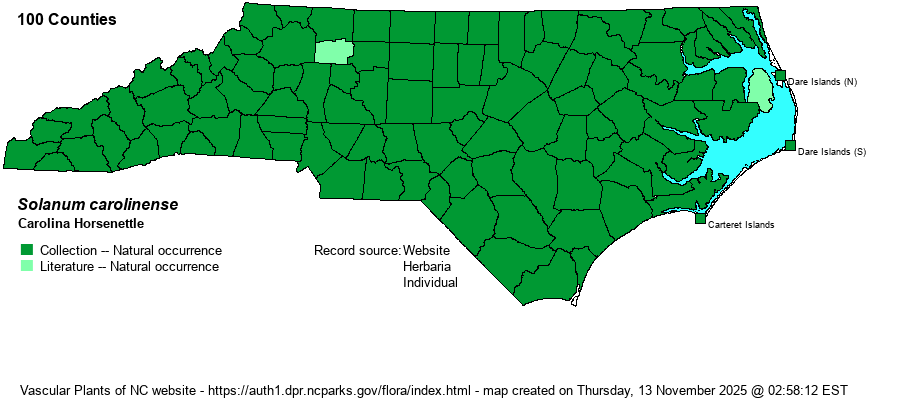| Author | L. | |
| Distribution | Throughout the state, occurs in all counties.
This is a widespread Eastern species, native almost certainly as far north as NC and VA, but is adventive in the northern portions to an undetermined extent. Essentially from New England to NE and south to the Gulf Coast. | |
| Abundance | Common to often abundant throughout. | |
| Habitat | This is a weedy native, found mostly in ruderal habitats. It grows in fields, roadsides, gardens, vacant lots, and many other types of disturbed habitats; in fact, it does not really grow in natural habitats. |
| Phenology | Blooms from May to July, and fruits from August to September. | |
| Identification | This is a very familiar weed, known to everyone, even to farmers probably trying to rid the plants from their property. It is erect and grows to about 2 feet tall, with a spiny stem that has a few branches. The alternate leaves are generally ovate to elliptic in general shape but have triangular lobes, often about 2-3 on each side of the leaf; the blade averages about 4 inches long and 2.5 inches wide. The flowers are on terminal racemes, with only a few flowers per cluster. Each has 5 triangular petals, and a spread of about 1.3 inches across; petals are white to slightly lavender-tinged. The long bright yellow anthers give the flower a yellow-and-white appearance. The fruit is quite distinctive -- a large orange-yellow berry about 2/3-inch across. The other two native species in the genus have much smaller flowers. | |
| Taxonomic Comments | Weakley lists a variety, the nominate one -- var. carolinense -- as the one found in NC.
| |
| Other Common Name(s) | Ball-nettle | |
| State Rank | S5 | |
| Global Rank | G5 | |
| State Status | | |
| US Status | | |
| USACE-agcp | FACU link |
| USACE-emp | FACU link |

